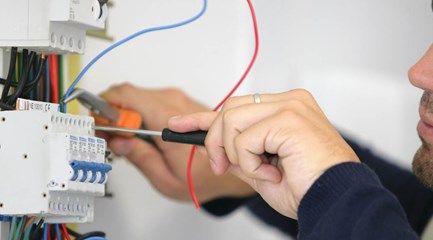
Are you feeling intimidated by all the electrical jargon flying around lately? I mean, what the heck is an RCD? And watt - sorry, what - is a volt?
We get it, we really do. In our day-to-day lives, most of us don’t need to understand the ins and outs of our fuseboxes (and some of us don’t even know where it is!) But wrapping your head around a few simple terms could make your life easier and safer.
If you’re worried about looking clueless in front of your electrician, don’t fear - the experts at Electrical Safety First are here with a handy guide to help you get to grips with the basics.
Ready to dive into the world of electricity?
Amps
‘Amps’ is the measure of current flowing in an electrical circuit.. You should think of electric current as the rate of flow of water through a hosepipe. The more water flowing through the hosepipe, the stronger (higher) the current is.
Volts
‘Volts’ is the measurement of electric pressure that causes electric current to flow. In keeping with the earlier example, you could think of volts as the water pressure in the hosepipe, which makes the water flow.
Watts
Amps multiplied by Volts equals Watts, which is the measurement of how much power is used in an electrical circuit. For example, the higher the wattage of an appliance is, the more power is used to run it. In terms of the hosepipe example, this would refer to the amount of water being released.
Need to calculate Watts to Amps, or vice versa? It’s never been easier thanks to our handy calculators - click for Watts to Amps and/or for Amps to Watts.
RCDs
Ever wondered what an RCD is? It stands for Residual Current Device, and switches off the electricity automatically if there’s a fault. It’s designed to prevent you from getting a fatal electric shock and is quite literally a lifesaver.
An RCD constantly monitors the electric current flowing through one or more circuits it is used to protect. If it detects electricity flowing down an unintended path, such as through a person who has touched a live part, the RCD will switch the circuit off very quickly, significantly reducing the risk of death or serious injury.
Although RCD protection reduces the risk of death or injury from electric shock, it does not reduce the need to be careful. Have your wiring checked at least once every 10 years to ensure that it’s safe, and test your RCDs every three months. If you find a fault with your wiring or an appliance, stop using it immediately and contact a registered electrician.
Check out the RCDs Explained page on our website – it goes into much more detail about the different types of RCD and how they work.
If you are a landlord, you should have the electrical wiring in your rental properties checked at least every five years – click for more information on landlords.
Fuseboxes
We’ve all got one, but what exactly are they?
Well, it’s pretty much what it says on the tin: a box that houses the fuses or circuit-breakers in a property – sometimes called a consumer unit. It’s where the electricity in your home is controlled and distributed - if you don’t know where yours is, make sure you find out in case you ever need to turn the electricity off in an emergency.
Your fusebox will contain three things: the main switch, fuses and/or circuit breakers, and RCDs.
- Main Switch - this allows you to turn off the electricity supply to your home. You might have more than one mains switch, so make sure you find out exactly how many you have and where they are.
- RCDs - you’re already an expert on these!
- Circuit Breakers- these are automatic protection devices in the fusebox that switch off a circuit if they detect a fault. They are similar in size to fuses, but give more precise protection. When they ‘trip’, you can simply reset the switch - but make sure the fault is corrected first!
There’s a page on our website that is completely dedicated to fuseboxes - find it here.
That was far less complicated that you expected, right? Electricity doesn’t have to be scary - in fact, it can be fascinating!
If we’ve sparked your attention (heh) then feel free to have a read through our website -it’s full of information about electrical safety, common hazards and simple ways to keep you and your family safe.
Happy reading!
More posts by Jenna Haldane



